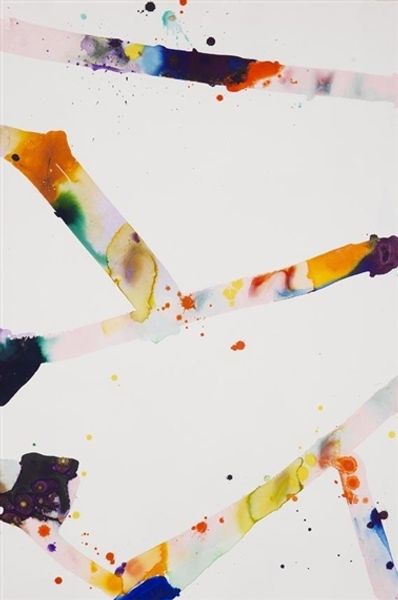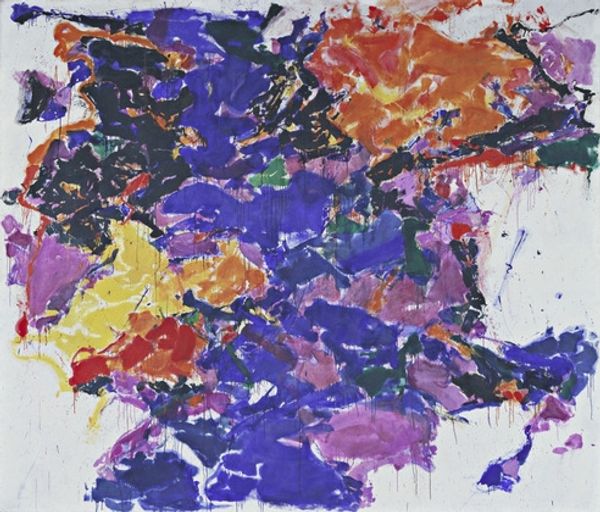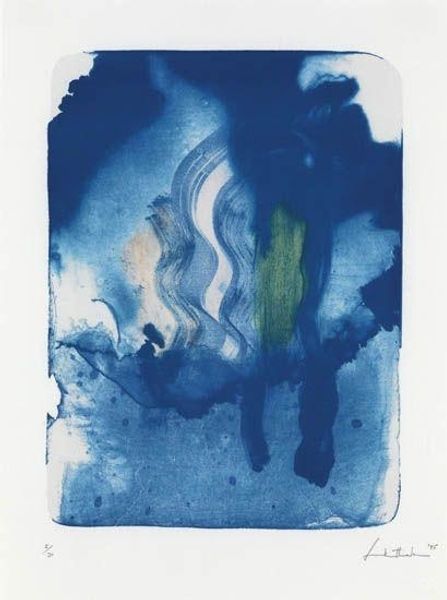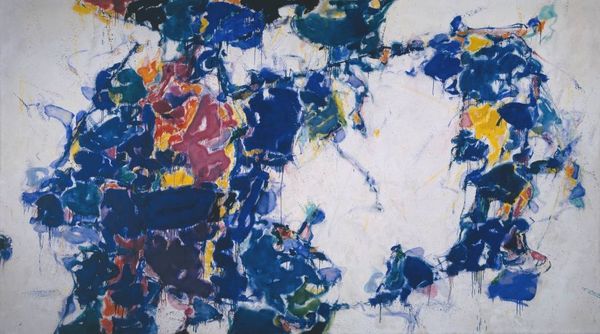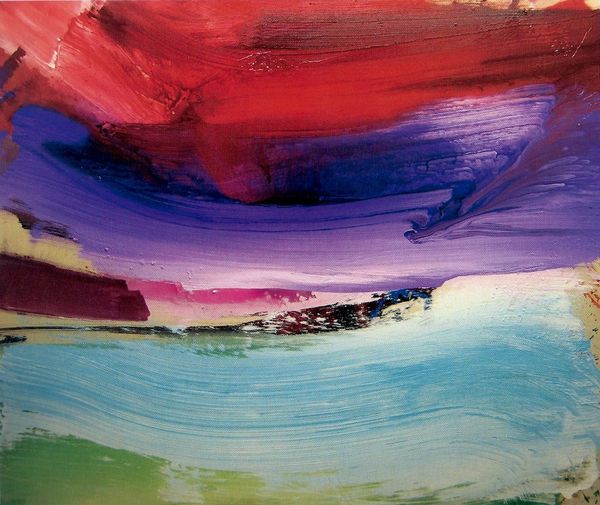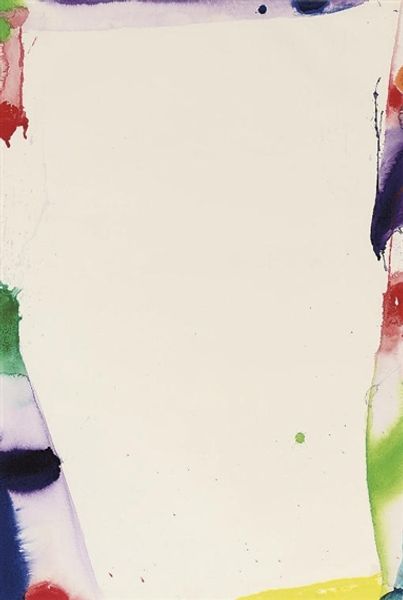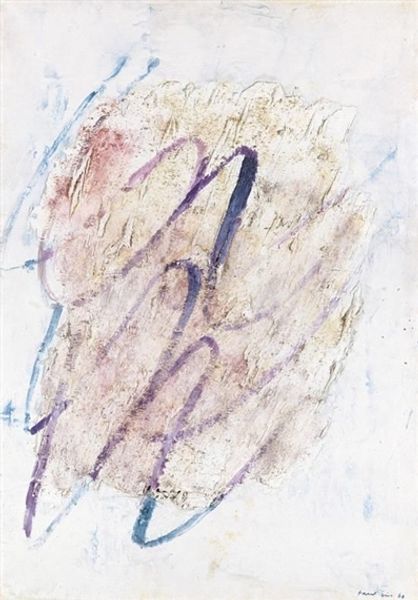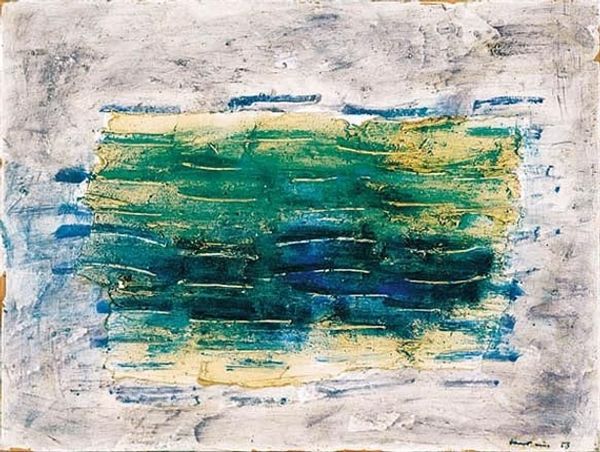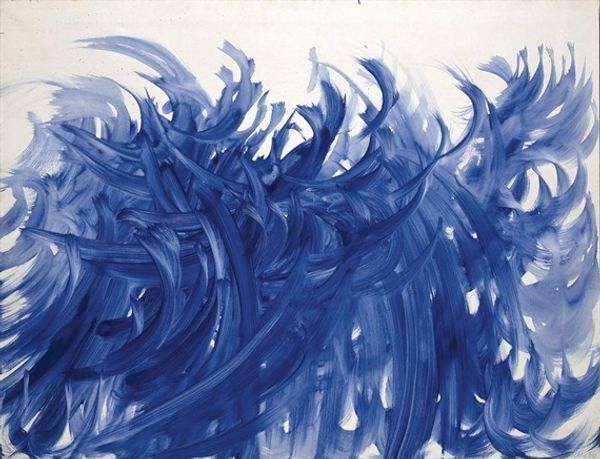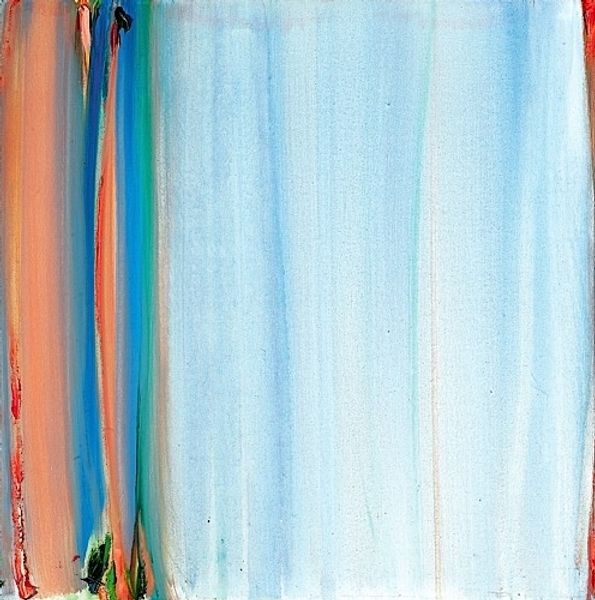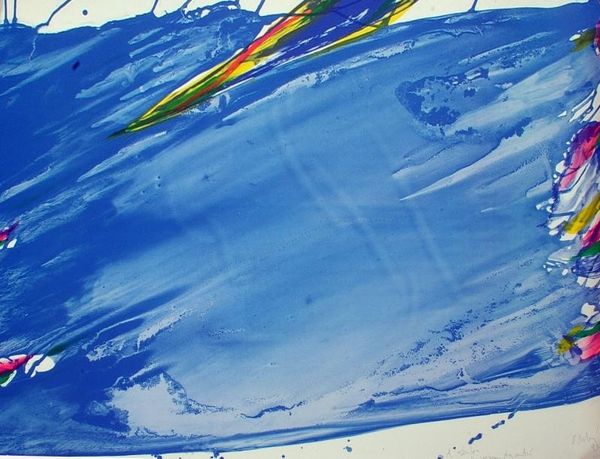
Copyright: Kazuaki Tanahashi,Fair Use
Curator: Looking at Kazuaki Tanahashi's "Ocean Within," crafted in 2011 using acrylic paint, what's the initial feeling or idea that comes to you? Editor: Whoa, the color is just mesmerizing, isn't it? That intense, almost indigo blue against the stark white... It feels like peering into a hidden, turbulent depth. There's a power and serenity somehow mixed in there. Like a whale song in paint. Curator: It's interesting you say that, because Tanahashi’s work often intersects with Buddhist philosophy and a deep concern for ecological issues. Abstract Expressionism, particularly landscape-inspired works, gives artists space to visualize interior and exterior concepts such as vastness. In that context, how do you view his portrayal? Editor: The 'interior' element is spot on! Because even though the title screams 'ocean', there's this swirling, inward motion in the brushstrokes. It's like the painting isn’t just about depicting an ocean, it's about the feeling of being submerged, overwhelmed maybe, by something much bigger than yourself. Sort of existentially drenched, you know? Curator: It resonates with feminist theory around the embodiment and the ecological self, and challenges to anthropocentrism by expanding beyond humanistic perspectives. By the swirling brushstrokes and gradations of blue and purple shades in "Ocean Within," could we see this as an allegory of humanity and the vastness of environmental entanglement? Editor: Absolutely, it can be. I see those darker, almost bruised hues at the base, too. The painting speaks of both immense beauty and fragility, a bit like that feeling when you find plastic waste while surfing...It is this collision that is profoundly present here. Curator: Right, it's the duality of nature – both a life-sustaining force and subject to violent disruption, often through the Anthropocene's effects. Tanahashi's choice of impasto with visible textures underscores nature’s raw, untamed essence. What does this choice of materiality tell you about the ocean and our place in it? Editor: The impasto gives it that visceral feel—like the foam is almost literally bursting from the canvas. For me, it pulls the ocean closer, lets you feel its presence physically as well as visually, underlining the unavoidable and raw connection that you were referencing earlier. It's almost challenging, isn't it? Daring you to touch it and dive in…even though you know it can be dangerous. Curator: It seems to engage ecological responsibility. Any last thoughts, reflecting on Tanahashi's artistic statement with the context we’ve explored? Editor: What remains with me is the paradox: this quiet painting speaks volumes about the roaring urgency of environmental issues. Thanks, Kazuaki, for the not-so-gentle nudge! Curator: Agreed, its abstract rendering allows for an intimacy of feeling, placing onus and space on each of us for our place and our planet.
Comments
No comments
Be the first to comment and join the conversation on the ultimate creative platform.
